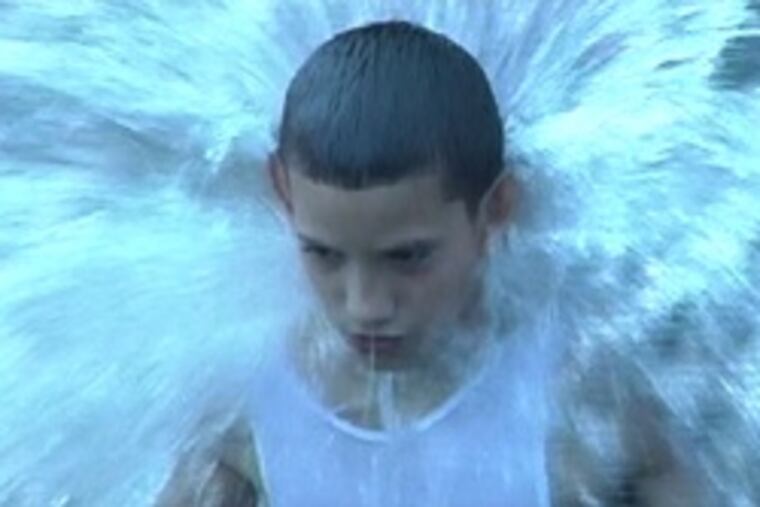Talent search looks to Canada
A conceptual artist from Vancouver exhibits at Temple Gallery.

Temple Gallery has been going out of its way - literally - to introduce artists it considers deserving of attention. Its latest exhibition marks the first U.S. appearance for conceptual artist Damian Moppett, whose drawings, paintings and sculptures have been seen mainly in his native Vancouver.
Moppett has been influenced by such well-known Vancouver exports as photographer Jeff Wall, installation artist Stan Douglas, and video artist and photographer Roy Arden. Like theirs, his work refers to popular culture, institutions, and his own art-school education, and, like them, he keeps his practice informal and open to possibility.
In this show of works from recent years, titled "After the Fall," he attempts to describe what it means to be an artist at this particular time by working in a variety of media and exploring his position in relation to the artists he identifies with. Because he takes a deliberately unself-conscious approach, this one-person show could easily have looked like a group effort. Amazingly, it doesn't.
Moppett's abstract and representational efforts on paper (in graphite, watercolor) and canvas (oil paint) look related, mainly because many are of or are based on his Vancouver studio interior. But unlike Gerhard Richter, who has made realist and abstract paintings at separate times in his career that do not appear to have been created by the same person, Moppett is recognizably Moppett most of the time, in contemporaneous works in different media and styles.
I was initially puzzled to read a checklist stating that the watercolors and graphite drawings, which make up an ongoing project - and most of the show - belong to one collector. Then I thought, "Why not?" It's conceptually one piece, after all, a free-wheeling experiment that should not be divvied up.
Community artreach
The northern reaches of Kensington seem an unlikely place for a successful New York artist to land; then again, Oliver Herring isn't your average artist. He's represented by Max Protetch Gallery, where he shows his sculptures and videos, and has exhibited at MoMA, the Hirshhorn, and other museums. But he also works collaboratively with people in his performance and video practice, and invites proposals for such efforts. When the curatorial staff of FLUX-space, an artist-run exhibition space, asked him to come to their neighborhood to develop a community outreach art project, he couldn't resist.
Last summer, Herring made two videos of the kids who live near FLUXspace. Briefly put, "Howard St. (Airborn)" shows groups of boys carrying a single boy as he performs athletic feats; "Waterloo St." catches boys cavorting in a high-pressure flood of water from an open fire hydrant. Herring's close-ups of children just being themselves, in tandem with the raw, unmediated sounds of their excited voices and the gushing water, is intense and exhilarating.
The videos are being shown at FLUXspace by appointment.
A fifth of fun
Fleisher/Ollman Gallery's fifth annual Winter Invitational, "Street Button," curated by director William Pym and his fellow F/O employees Claire Iltis and Heather Shoemaker, is pure fun, with a little dark humor. It's also less "of a piece" than some predecessors.
Not one of these nine artists currently has a commercial affiliation, but all will probably be fielding offers in the near future.
A few standout pieces include Jennifer Levonian's clever stop-motion animations, "You, Starbucks" (2006), a send-up of
Last Night at Marienbad
, and "Smells Like English Boxwood" (2006-2007), a cautionary tale about faking history; Yvonne Lung's "The Color of My Flesh," involving dozens of porcelain casts of Barbie-doll heads colored with "flesh" and "oriental flesh," whose features have become increasingly indistinct as the mold wears out; and Andrew Brehm's "Snowscape" (2007), an ordinary white bookcase with glossy white mountains running the length of its top.